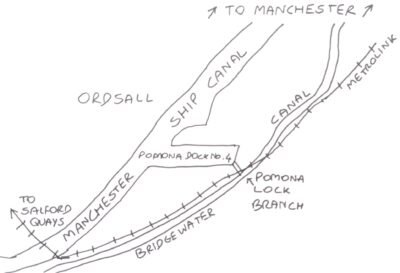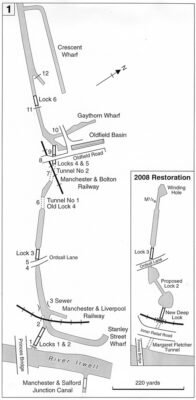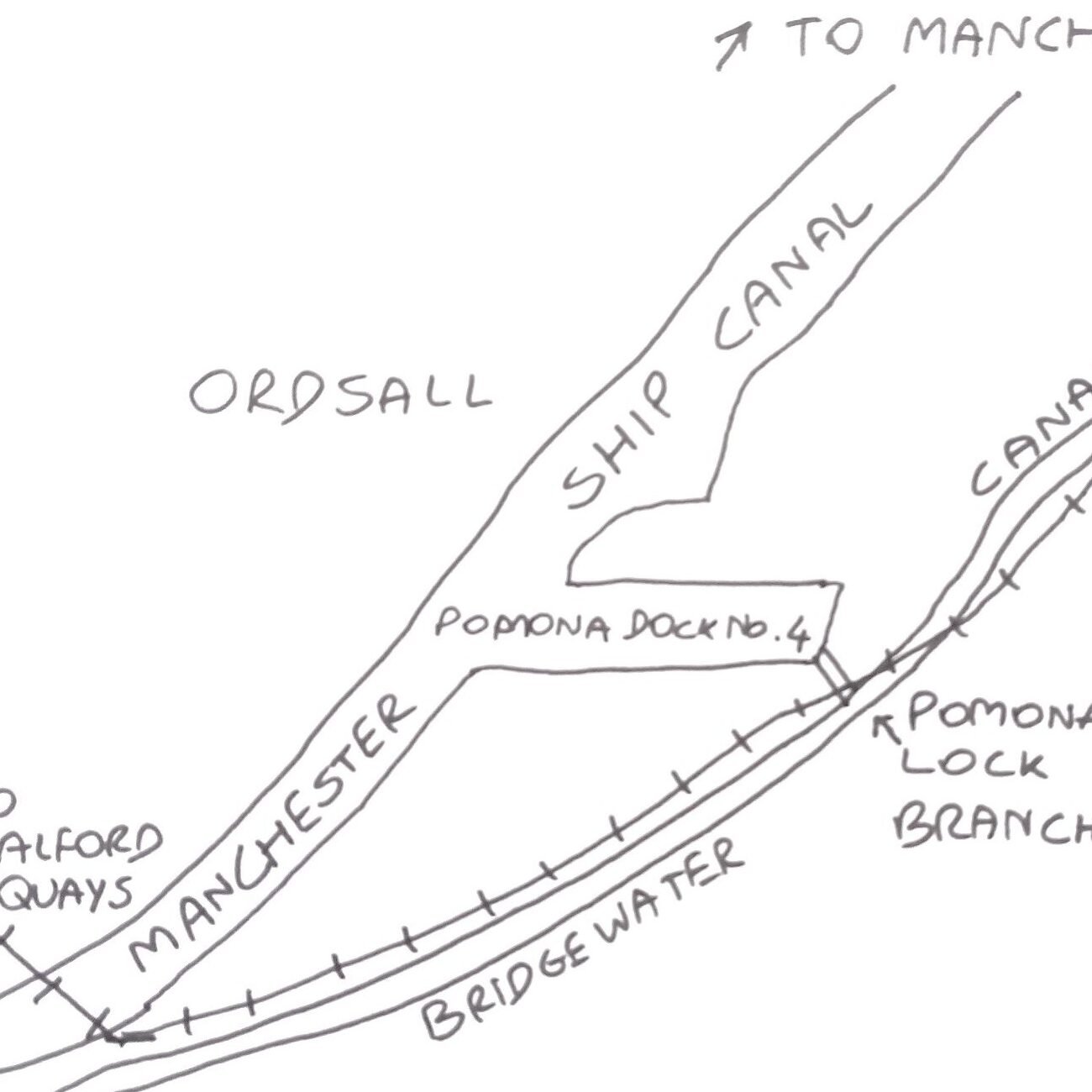It Could Have Been ‘Ferry Cross the Irwell’ – the Irwell Connection
You may well ask, ‘what is the connection between the Irwell and the Bridgewater Canal?’ There is one physical connection and plenty of indirect connections. One of the most indirect is that the original planned course for the Bridgewater Canal would have taken the canal from Monton to continue southeast to join the Irwell necessitating a transhipment across the river into Manchester. Instead, James Brindley, a consultant engineer on the canal’s construction advised a course that it takes today crossing the Manchester Ship Canal which at that time had been the Mersey & Irwell Navigation at Barton Aqueduct in 1761. This avoided the transhipment on the water of the Irwell.
The former Mersey & Irwell Navigation (M&IN) was created in the 1730s, well before the onset of the Bridgewater Canal which was connected to the Mersey at Runcorn in 1773 via a meandering contour route from Stretford that is roughly parallel to the Mersey & Irwell.
The course of the canal is in the Irwell River Catchment from Worsley to Manchester city centre and to Stretford, beyond which it enters the Mersey Catchment. It can be a tempestuous river as shown in 2015 when Storm Eva deposited 128mm in 36 hours on the Upper Irwell. Downstream, 750 houses were flooded in Salford and 670 in the Radcliffe/Redvales area. The river Irwell should be regarded as a major river but it isn’t because it is relatively short, only 39 miles from the source in the West Pennines above Bacup to the junction with the Mersey at Irlam.
In the early 70s there was a brief moment when the profile of the Irwell could have been improved as, in the wake of the 1972 Local Government Act, the new metropolitan borough of Salford was almost given the name Irwell but opposition pointed out that the Irwell flowed through two other boroughs and also didn’t flow through Worsley, even though Worsley Brook is a tributary of the Irwell.
There are claims that the river Mersey is a rarity among rivers in not being named after the larger tributary, i.e. the Irwell, rather than the smaller Mersey from the point at which they meet. The rivers met at Irlam and the confluence is now with the Manchester Ship Canal near Irlam Locks. The Mersey possibly also had the ascendancy in the name game because it was a boundary river between historic Lancashire and Cheshire and before that between the territories of Mercia to the south and Elmet to the north. So, whether or not it should have been ‘Ferry Across the Irwell’ is a moot point but shows that the Irwell is a historically under-rated river.
The Irwell should be regarded as a major river for its significant role in the development of the world’s first industrial revolution. And the conduit, so to speak, for that role has been two canals, the Bridgewater Canal and the Manchester Bolton & Bury Canal (MBBC). The relationship, the connection, between the three waterways is currently made on the 1.6km stretch of the Irwell between the Pomona Locks on the Bridgewater Canal and the Middlewood Locks on the MBBC.


It is commonly accepted that the drivers for the world’s first industrial revolution were the features that came together in Manchester, namely coal, canals and cotton. Cotton was a consumer and industrial product and it was made affordable by the proximity of coal which was brought to market by the two canals. Thus, the mines at Worsley Delph and along the Irwell Valley gave up the coal that the two canals delivered; the Bridgewater to the wharfs at Castlefield and the MBBC to the wharfs at the aptly named Upper Wharf Street in Salford.
Of course, the Bridgewater Canal Company for many years did not want connections to be made for either the M&IN or the Johnny-come-lately of the MBBC which were both seen as a threat to its business ascendancy. The connection via Pomona docks was only made in 1995 and replaced the short Hulme Locks branch canal opened in 1839 to connect the Bridgewater Canal to the M&IN. In the same year, the MBBC finally made a connection via the river Irwell at Middlewood Locks to the wider network with the construction of the Manchester & Salford Junction Canal (M&SJC) which today can still be seen joining the Rochdale canal near the Rain! Bar in city centre Manchester. It is probably not a coincidence that the canals made the connections in the decade that launched the Railway era and consequent severe competition for the canals’ trade.

It is worth reflecting a little more on the intrinsic qualities of the river Irwell, regardless of its canal connections. Cyril Bracegirdle’s book “The Dark River – the Irwell” reflected in its title both its industrial heritage and pollution with 400 mills in proximity to the river found in a survey of 1800, and its propensity to flood.
Even in 1972, Bracegirdle records, the flow of water at the Adelphi Weir in Salford was 120 million gallons and that included 32 million gallons of outflow from seven sewage works and another 14 million gallons of industrial effluent from twenty-one factories. Today it is a much cleaner river with the totemic kingfishers seen regularly along the full length and in recent years the arrival of otters. In the late 19th century, Joseph Anthony wrote,
Whoe’er hath seen dark Irwell’s tide,
Its sombre look and sullen glide,
Would never deem that it, I ween,
Had ever brighter, gayer been
It’s not perfect now but it is certainly brighter than in those dark Irwell days and is overdue a recognition for its role in canal creation and the industrial revolution.

David Barnes Green Badge Tourist Guide for the Bridgewater Canal
If you are interested in visiting the Bridgewater Canal with a guide contact David on:
07961535163 / davidbarnes.david@gmail.com
Photo credits:
Manchester Bolton & Bury Canal joins the Irwell at Middlewood Locks – photo by David Barnes
Bridgewater Canal – joins the Ship Canal/Irwell via Pomona Lock – photo by David Barnes







